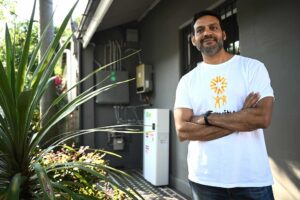Thanks to their hydro and nuclear plants China and the US are still in the renewable energy lists. India does very poorly.

To an extent the renewable share in total depends on the hydro resource. You might say that the VRE (variable renewable energy = wind and solar) share likewise depends on the wind and solar natural endowment, but in my opinion most countries in the world can find some wind and solar if they want to. Even Japan could do as much offshore wind as it has the political will for.
On this metric Australia does well and is probably growing its share as quickly as anywhere. By contrast Japan, India and Korea are going to fall behind due to the inability to get on with the job. The USA (despite California and Texas) is also falling behind.
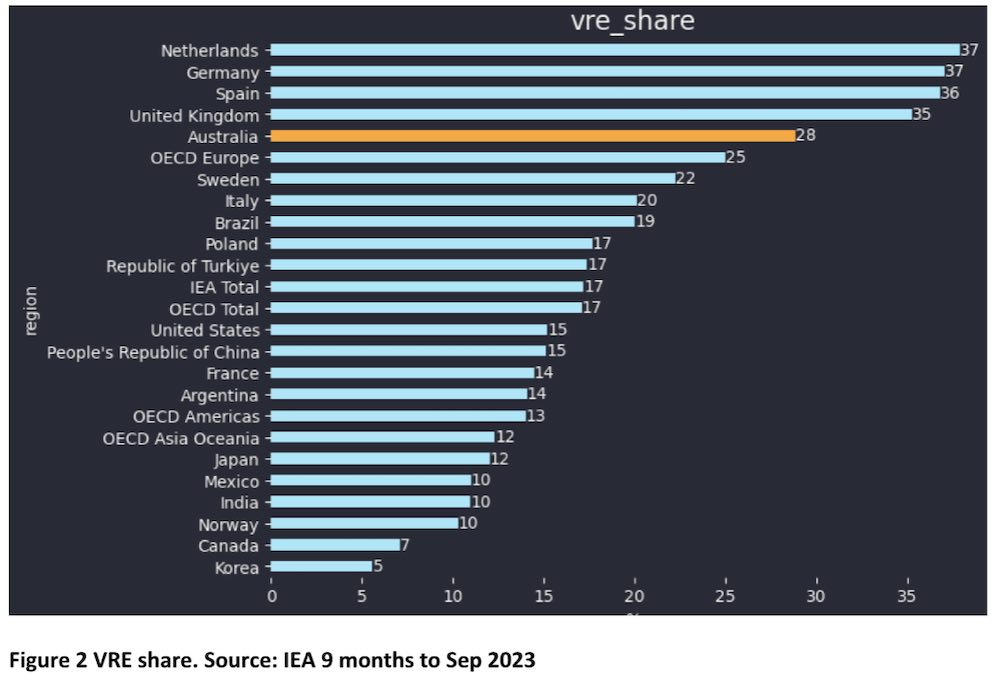
Nine month shares miss some seasonality but in this note it’s the rough direction, rough share, and the relativities that are of interest.
Again these numbers are history and don’t necessarily tell us anything about the future.
Nuclear in Australia is just an example of LNP’s rejection of anything “left”
I personally compare the LNP’s ability to sell nuclear to a religious view preaching that there is “life after death.” There is zero evidence of life after death and it is contrary to everything we know from centuries of medical and scientific research, but millions profess to believe in the idea.
Similarly, once the LNP agreed that climate change was indeed real and that decarbonisation targets were bipartisan policy then it became necessary to invent an alternative vision to using wind and solar. That’s because wind and solar are “green” and left.
The LNP had traditionally supported coal but if coal was a problem then whatever the answer was it certainly couldn’t be “wind and solar.” So a solution had to be found and that was nuclear. The practical issues with nuclear don’t matter at all.
It was a fuel that the base would not only accept but rally round. Conveniently, Ted O’Brien had long advocated nuclear and so away he went. In the share market I saw many times over 30 years how small speculative stocks could exist for 10-20 years on an idea.
This idea might be some new medical technology, a new form of car engine, a potential gold mine, a hydro plant in New Guinea delivering power to Sydney. The worst thing the company management could ever do was put the idea into practice, because then the problems would start.
But if you only talk about it, put an expert in front of the shareholders with a report and some facts and figures, then you could raise enough money to keep going for years and do it a few times over. Nuclear in Australia is just like that, but with political ideology added in.
People are gullible and will mostly fall for a good story well told what they want to believe in. We used to say we would start a company “The Golden Shaft”, we get the gold, you get the shaft. But anyway, not only do I digress but, equally, it’s worth acknowledging that the fact that Australia doesn’t need nuclear and can’t afford to wait for nuclear doesn’t mean that at some future time there may not be a role for it.
In the meantime, the task in Australia is clear, build the wind and solar, ensure the transmission and firming are there and then use the decarbonised electricity system to decarbonise industry and transport. It’s a clear achievable plan and we have been set on the course for a decade already. The problems are known and the solutions are easy.
Global and regional trends
So let’s look at the global and regional trends, bearing in mind that the trends can’t show policy shifts, and won’t show the impacts of new plants under construction or old ones that will shortly be decommissioned. Trends are interesting but no substitute for informed analysis.
Globally, or at least that part of the world within the IEA database, gas is now the largest fuel source for electricity, largely because of the USA. Wind and solar have overtaken nuclear and in my view will overtake coal with the next 12-18 months. There are some new nuclear generators to come in China but, equally, the new wind and solar being built in China far exceeds the new nuclear, even on a capacity factor adjusted basis.
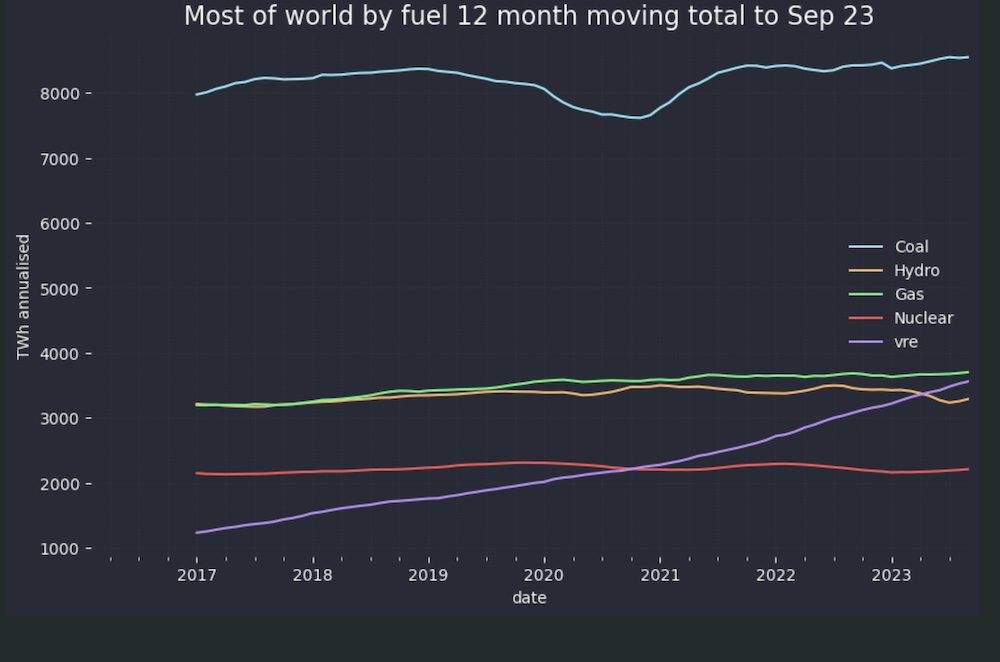
In OECD Europe, VRE is now easily the largest fuel source with the coal share having more or less halved and nuclear down by 22% from its 2011 peak.
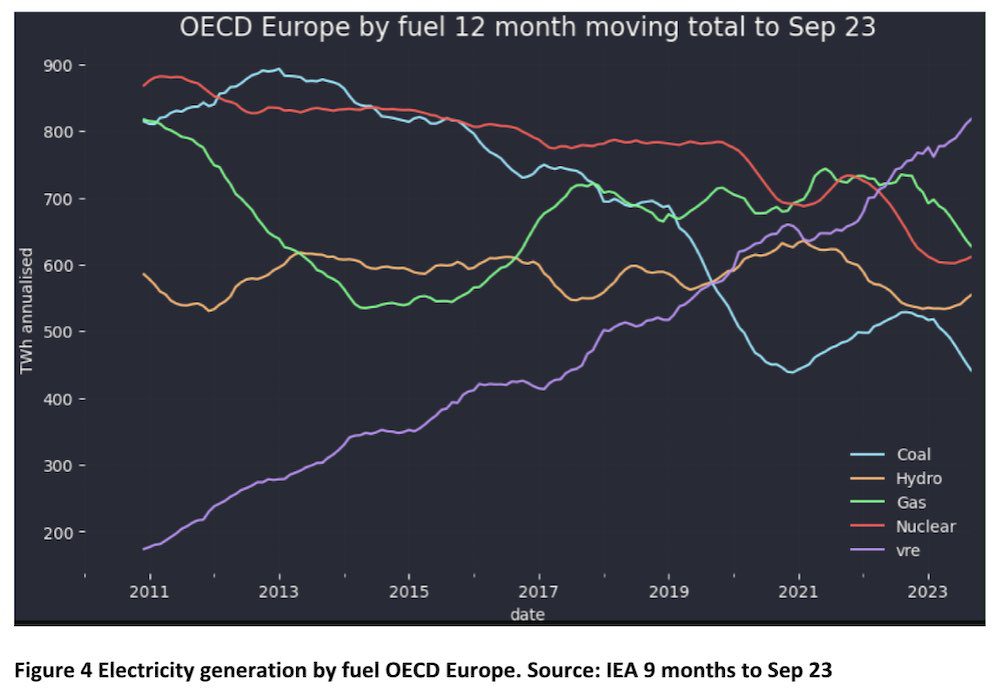
In the US, gas is dominant and growing. Due to shale gas and the lack of bipartisan consensus on climate change I expect gas to retain its dominant position for years. Renewables will soon overtake coal.
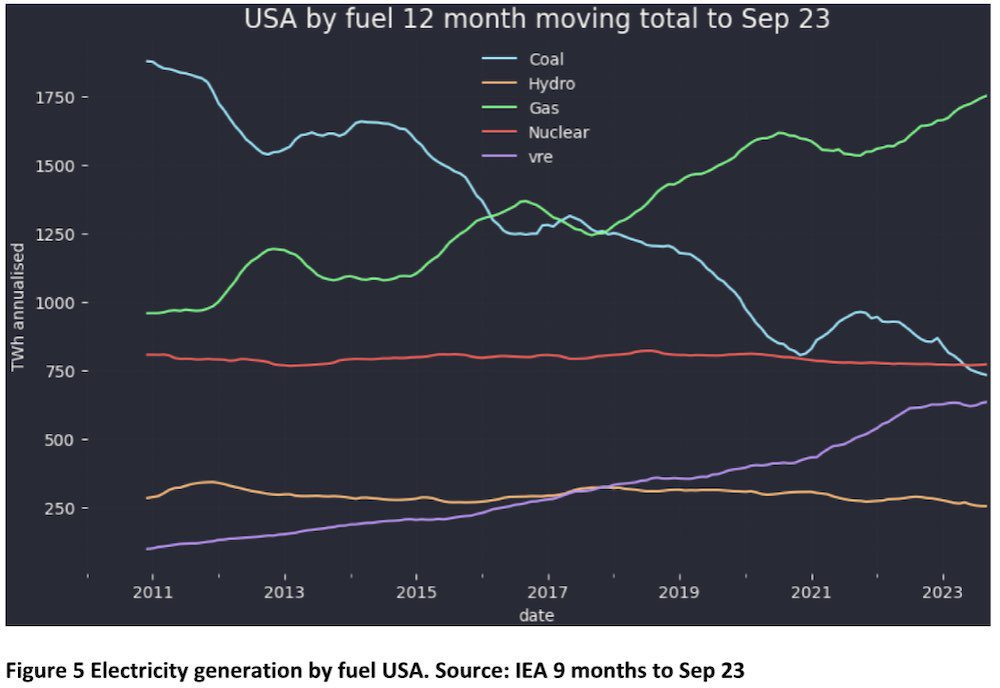
China and India have a long way to go. Many times do I read how much solar capacity is added each year in China. And then I look at the generation shares and feel sorry for the future generations.
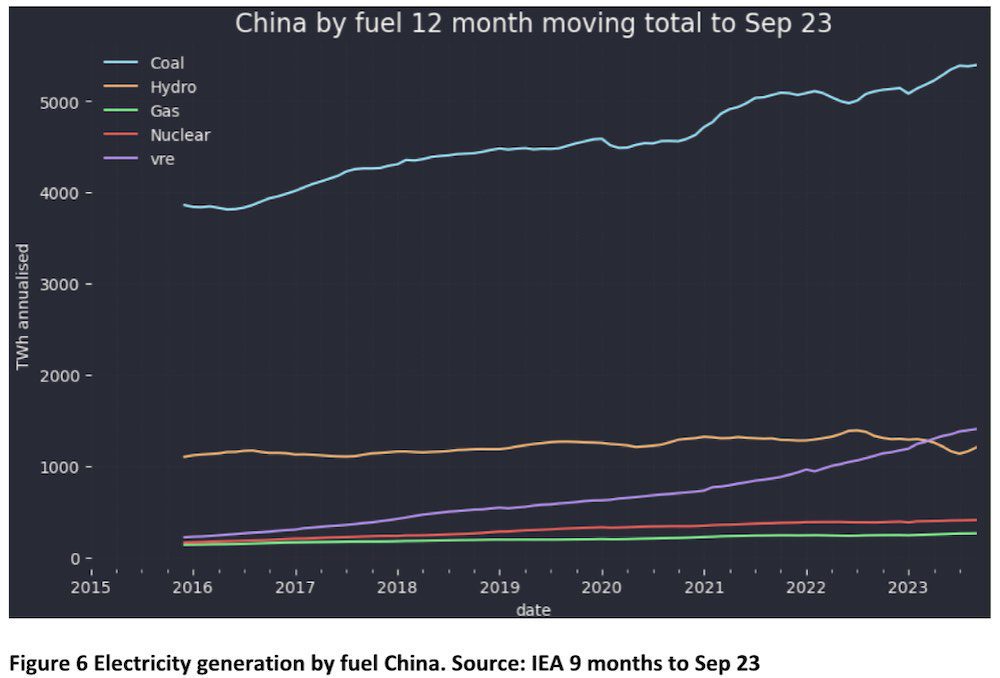
As for India there is not much positive to say so I will say nothing except to note that although the population of China and India is roughly equal China consumes 4-5X the amount of electricity that India does.





